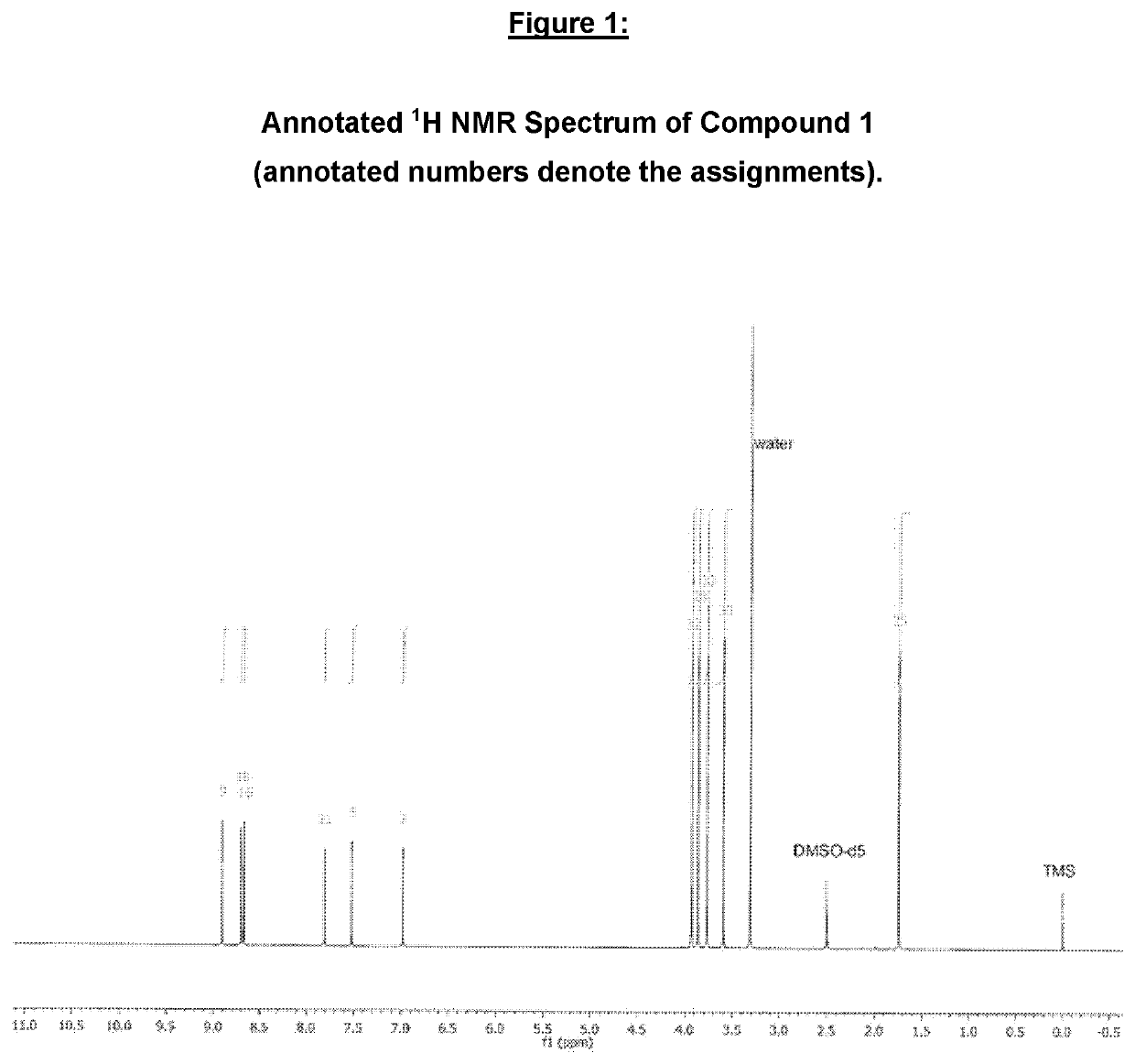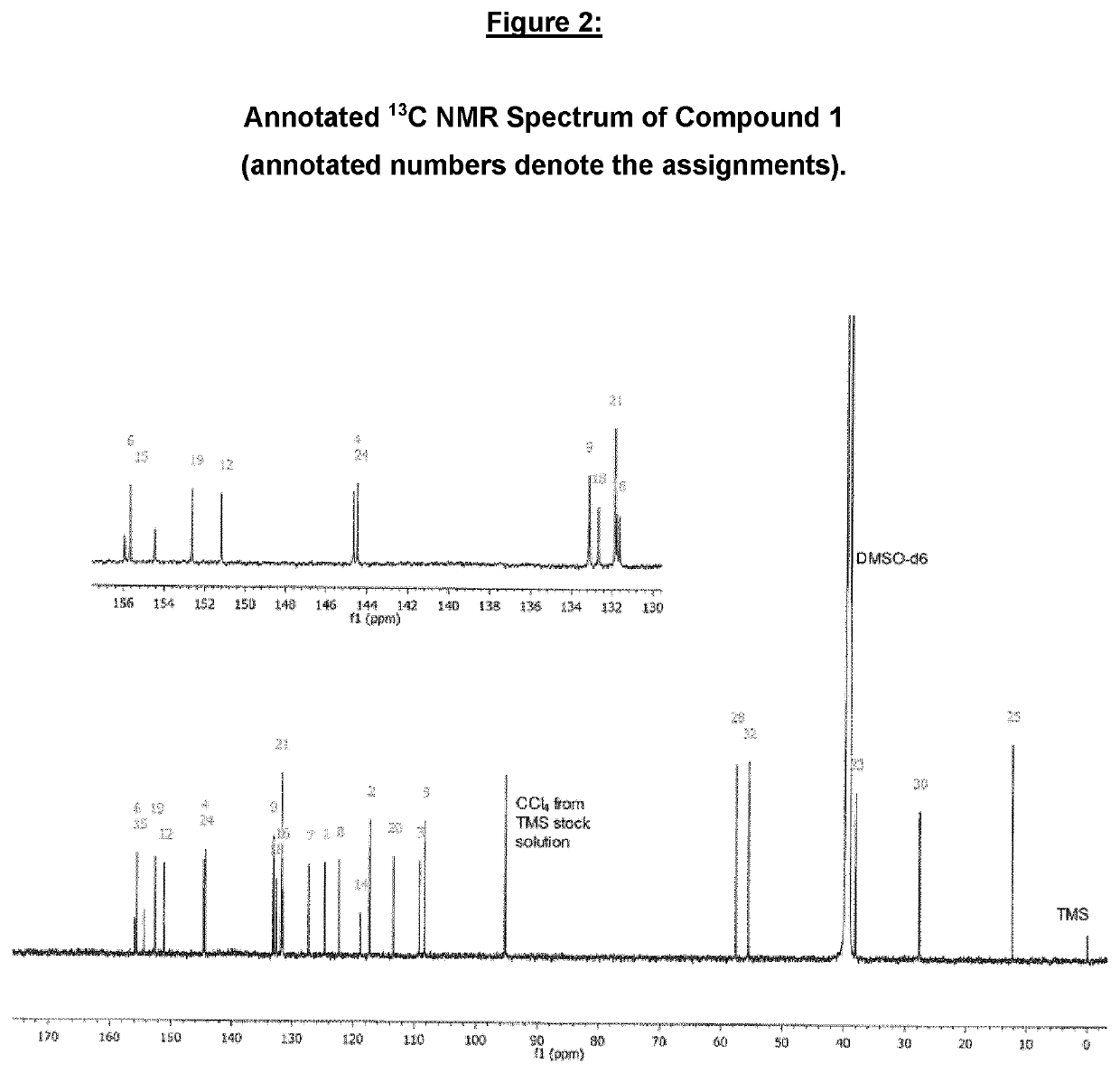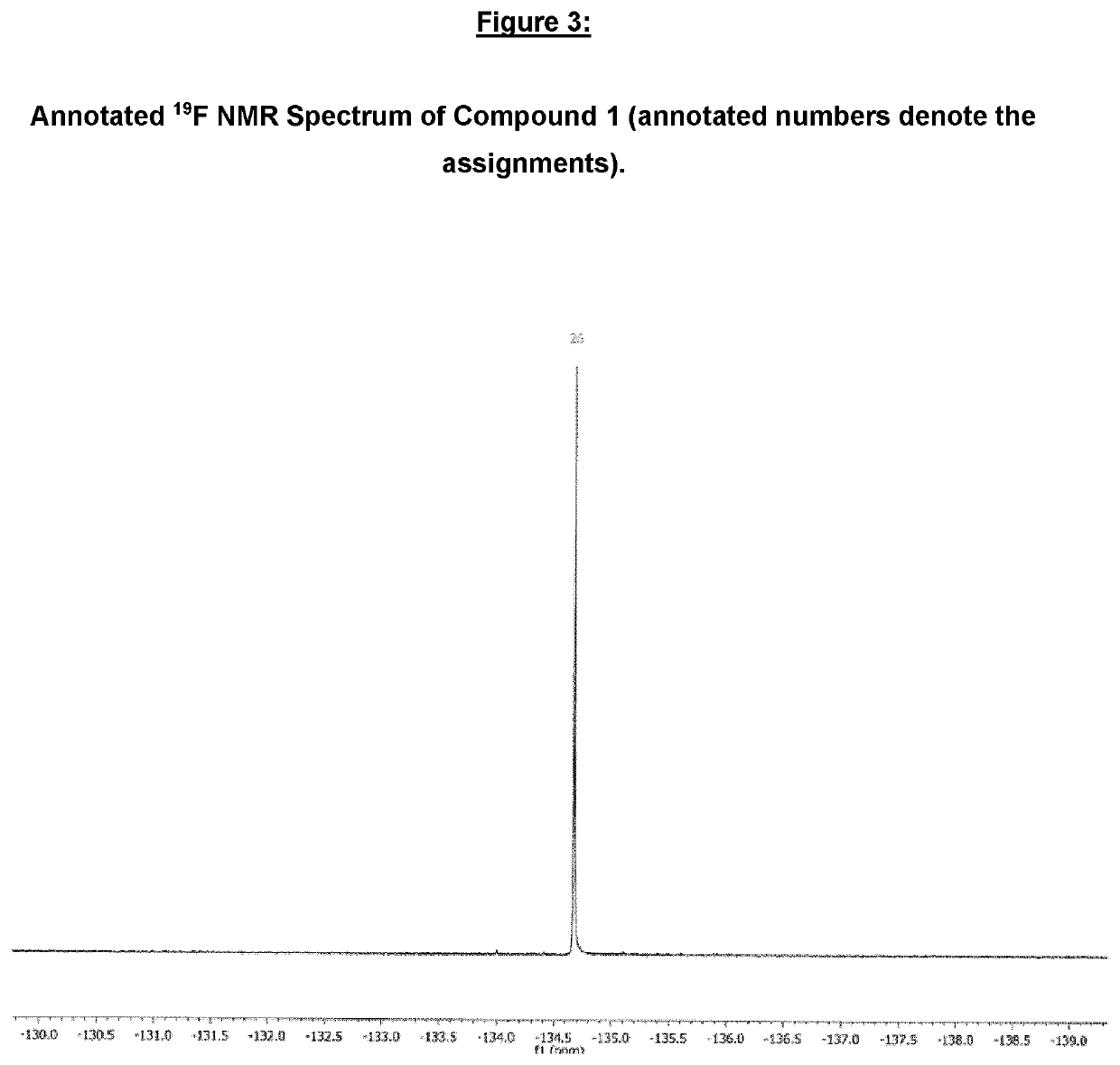Imidazolonylquinoline compounds and therapeutic uses thereof
a technology of idazolonylquinoline and compound, which is applied in the field of atropisomers and deuterated derivatives, can solve the problems of cell cycle arrest, tumor cell death, and double-strand damage type that is particularly cytotoxic, and achieves beneficial bioavailability, high inhibition of atm kinase, and beneficial selectivity over other kinases.
- Summary
- Abstract
- Description
- Claims
- Application Information
AI Technical Summary
Benefits of technology
Problems solved by technology
Method used
Image
Examples
example 1
on of Compounds 1 and 2
[0344]Compound Y is prepared accordance with the procedure disclosed in WO 2016 / 155844, followed by separation of Compounds 1 and 2 from Compound Y:
a. Synthesis of 6-bromo-N-(3-fluoro-5-methoxy-4-pyridyl)-7-methoxy-3-nitro-quinolin-4-amine
[0345]Under a dry nitrogen atmosphere, a solution of 3-fluoro-5-methoxypyridin-4-amine (447 mg, 3.02 mmol) dissolved in N,N-dimethylformamide (5 mL) was provided. Then, sodium hydride (504 mg, 12.6 mmol, 60%) was added to the solution and stirring continued for 5 minutes at room temperature. 6-Bromo-4-chloro-7-methoxy-3-nitro-quinoline (800 mg, 2.52 mmol) was then added to the reaction mixture, followed by 15 minutes of stirring at room temperature, then by quenching of the reaction through addition of ice water (100 mL). The precipitate was filtered off, washed with ice water and dried to give 1.00 g (94%) 6-bromo-N-(3-fluoro-5-methoxy-4-pyridyl)-7-methoxy-3-nitro-quinolin-4-amine as a yellow solid.
b. Synthesis of 6-bromo-N4...
example 2
of the Atropisomers and Purification of Compound 1
[0352]Compounds 1 and 2 can be isolated from Compound Y as shown in Scheme 1 and in FIG. 6 and as discussed in detail below. One of ordinary skill in the art will appreciate that the process described below is equally applicable for compounds 3-a and 3-b from 3, 4-a and 4-b from 4, as well as 5-a and 5-b from 5.
Step 1:
[0353]1. Into a 200 L reactor, acetone (108 L, 20 vol.), purified water (8.13 L, 1.5 vol.) and Compound Y (5.42 Kg, 1.0 eq.) were added at 20-25° C.[0354]2. Charged with dibenzoyl-L-tartaric acid (4.33 Kg, 1.0 eq.).[0355]3. Heated to 52-55° C. to give a clear solution, stirred for 0.5 h at 52-55° C.[0356]4. Cooled to 20˜25° C.[0357]5. Filtered and washed filter cake with acetone (5.4 L, 1 vol.) once.[0358]6. Collected the cake and dried to give the L-salt B (L-salt of Compound 2) (light yellow solid with 95.9% of chiral purity).[0359]7. Concentrated the mother solution and obtained the L-salt A (L-salt of Compound 1).[0...
example 3
raphic Separation, Purification and Analysis
[0391]3.1 Compounds 1 and 2 can be isolated from Compound Y using chromatography on a chiral stationary phase (see, e.g., Chiral Liquid Chromatography; W. J. Lough, Ed. Chapman and Hall, New York, (1989); Okamoto, “Optical resolution of dihydropyridine enantiomers by high-performance liquid chromatography using phenylcarbamates of polysaccharides as a chiral stationary phase”, J. of Chromatogr. 513:375-378, (1990)). Compounds 1 and 2 can be isolated by chromatography on chiral stationary phase, for example, a Chiralpak IC column (5 mm, 150×4.6 mm I.D.) e.g., using isocratic elution with a mobile phase containing: H2O / ACN 50 / 50 v / v (ACN: acetonitrile; v: volume). One of ordinary skill in the art will appreciate that the same procedure can be applied for compounds 3-a and 3-b, 4-a and 4-b as well as 5-a and 5-b.
[0392]A thus obtained chromatogram is illustrated in FIG. 5 (Column and elution as mentioned above, flow 1.00 ml / min, UV @ 260 nm; T...
PUM
| Property | Measurement | Unit |
|---|---|---|
| Angle | aaaaa | aaaaa |
| Angle | aaaaa | aaaaa |
| Angle | aaaaa | aaaaa |
Abstract
Description
Claims
Application Information
 Login to View More
Login to View More - R&D
- Intellectual Property
- Life Sciences
- Materials
- Tech Scout
- Unparalleled Data Quality
- Higher Quality Content
- 60% Fewer Hallucinations
Browse by: Latest US Patents, China's latest patents, Technical Efficacy Thesaurus, Application Domain, Technology Topic, Popular Technical Reports.
© 2025 PatSnap. All rights reserved.Legal|Privacy policy|Modern Slavery Act Transparency Statement|Sitemap|About US| Contact US: help@patsnap.com



